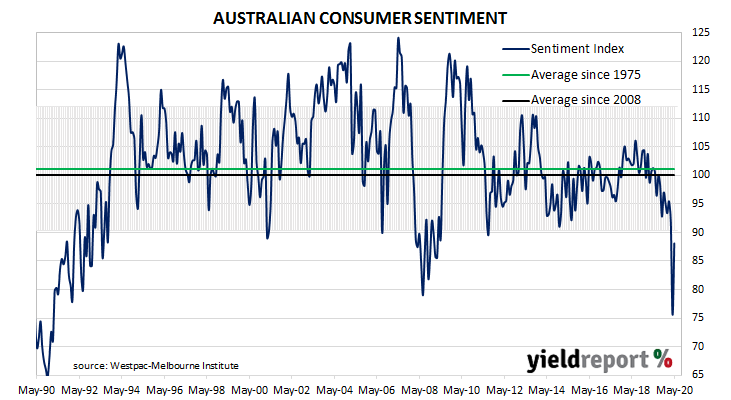Summary: Household sentiment bounces after April plunge; number of pessimistic consumers greater than optimistic consumers; Westpac-Melbourne Institute index at 2008/2009 levels
After a lengthy divergence between measures of consumer sentiment and business confidence in Australia which began in 2014, confidence readings of the two sectors converged again around July 2018. Both readings then deteriorated gradually in trend terms, with consumer confidence leading the way. Household sentiment fell off a cliff in April but May’s figures have marked a reduction in pessimism.
According to the latest Westpac-Melbourne Institute survey conducted in the first full week of May, average household sentiment partially recovered from the staggering dive which took place in April. The Consumer Sentiment Index rebounded from 75.6 to 88.1, taking it back to a level on par with some of the readings from 2008 and 2009 when the GFC was unfolding.
Westpac chief economist Bill Evans said, “The May turnaround marks the biggest monthly gain in the Index since the survey began nearly fifty years ago. That has gone a long way towards reversing the record monthly fall we saw last month.”
Any reading below 100 indicates the number of consumers who are pessimistic is greater than the number of consumers who are optimistic. The latest figure is still below the low end of the normal range and it is substantially below the long-term average reading of just over 101.
The report came out on the same day as the latest quarterly wage cost indices. Local Treasury bond yields were almost unchanged, ignoring moderate falls in US Treasury markets overnight. By the end of the day, the 3-year ACGB yield had inched up 1bp to 0.24% while 10-year and 20-year yields finished unchanged at 0.95% and 1.61% respectively.

